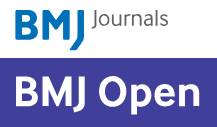Authors
Affiliations
Abstract
Background: So far, no comprehensive studies have been performed to assess burden and determinants of anemia in Iran. In the present study, we aimed to answer this query using the data obtained from the Prospective Epidemiological Research Studies in IrAN (PERSIAN).
Methods: In this cross-sectional study, we included 161,686 adult participants (aged 35 years and older) from 16 provinces of Iran. Anemia was defined as a hemoglobin concentration of <13 g/dL in males and <12 g/dL in females. To evaluate the association between anemia and different factors, we used the multivariable Poisson regression analysis with robust variance by applying adjusted prevalence ratio (PR) with 95% confidence interval (CI).
Results: Of the total number of subjects, 72,387 (44.77%) were male and others were female. Mean age was 49.39±9.15 years old. The overall age- and sex-standardized prevalence of anemia was 8.83% (95% CI: 8.70-8.96%) in the included population. The highest and the lowest age- and sex-standardized prevalence of anemia pertained to Hormozgan (37.41%, 95% CI: 35.97-38.85%) and Kurdistan (4.57%, 95% CI: 3.87-5.27%) provinces, respectively. Being female (PR = 2.97), rural residence (PR = 1.24), being retired (PR = 1.53) and housewife (PR = 1.11), third and fourth wealth status quartiles (PR = 1.09 and PR = 1.11, respectively), being underweight (PR = 1.49), drug user (PR = 1.35), inadequate sleep (PR = 1.16), poor physical activity (PR = 1.15), diabetes (PR = 1.09), renal failure (PR = 2.24), and cancer (PR = 1.35) were associated with increased risk of anemia. On the other hand, illiteracy (PR = 0.79) and abdominal obesity (PR = 0.77) decreased the risk of anemia.
Conclusions: According to the results, a variable prevalence of anemia was observed across the included provinces. We tried to provide an informative report on anemia prevalence for health professionals and authorities to take measures for identification and management of the cases of anemia in high-prevalence areas.

